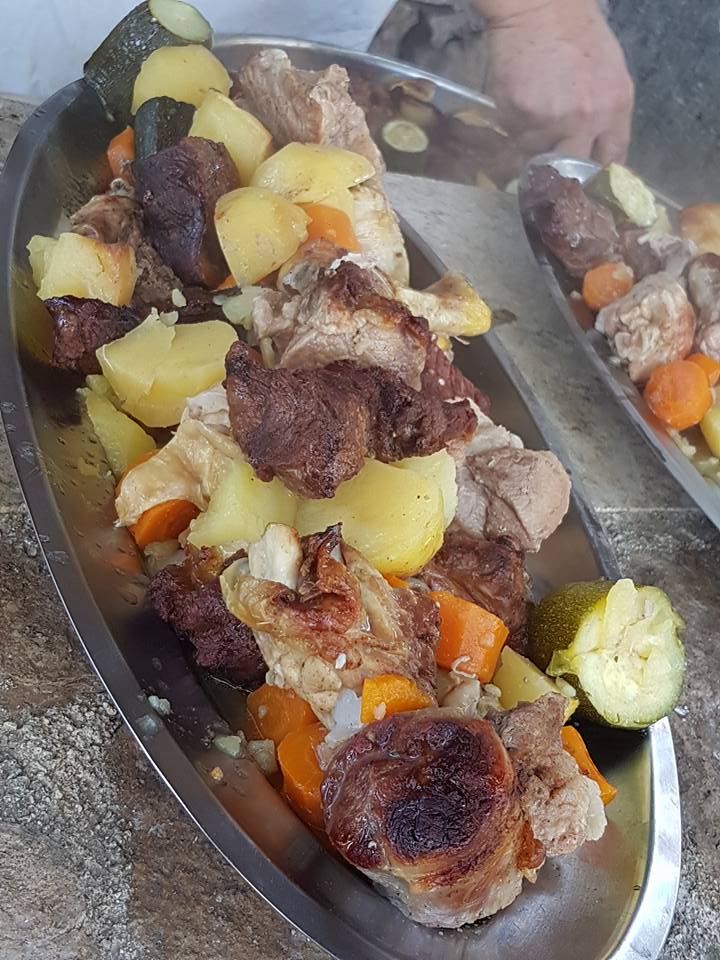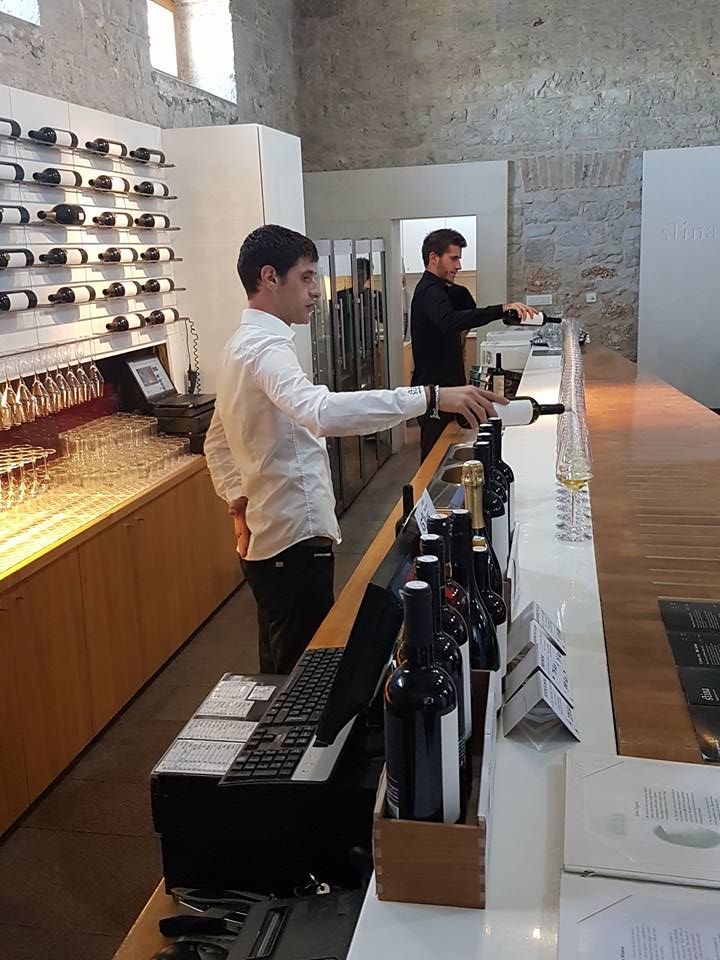Day 2 of Dalmatia's international workshop to promote gourmet tourism was largely spent on the island of Brac on October 19, 2017, as SplitB2B continued with its educational programme for international travel agencies.
A new initiative is underway to promote food and wine tourism in Croatia by bringing together hand-picked international travel agencies with no previous experience of Croatia and pairing them with local destination management companies. As previously reported, Split B2B kicked off on Wednesday, the first in a three-day tour of some of Central Dalmatia's highlights for 18 travel agents from 11 countries, before they meet their local counterparts on the last day, 35 Croatian destination management companies, in a series of B2B workshops.

An early start from the hotel in Split and a stroll through UNESCO World Heritage Site, Diocletian's Palace, before a gentle stroll along Split's harbour front to catch the ferry to the island of Brac, Croatia's most populated island, with some 14,500 inhabitants.

A glorious Dalmatian morning brightened the mood considerably - the Dalmatian capital slowly disappearing in the distance.

Croatia's islands are connected year-round, and there were still plenty of tourists around, taking advantage of the connections to catch beautiful islands such as Brac, Hvar, Solta and Vis in this glorious Dalmatian Indian summer.

One of the trademarks of SplitB2B has been the efforts of the organisers to bring the very best professionals together to present the project in the best possible light, and a very popular component of the trip was local guide Dino Ivancic, whose humour and expert knowledge have been widely appreciated. Recently named in the top three guides in all Croatia, it was good to be reunited with someone I once labelled as the funniest man in Split. He still is.

October is olive picking season in Dalmatia, and enterprising locals are finding ways to get foreigners to do the work. The first Olive Picking World Championship starts today on Brac, with teams from nine countries (and as far away as New Zealand) taking part. Our team was welcomed by the Supetar Tourist Board and then quickly put to work.

Simple authentic experiences - the picking was an absolute hit and a reminder that Dalmatia offers so many uncomplicated and authentic experiences, which is a large part of the charm which tourists cannot experience back home.

Having picked olives from the 120 trees in my wife's family field for years on Hvar, I felt I would be a little disloyal if I joined in, so I settled for a glass of wine, some contemplation and an olive grove with a view. The Ranjak estate was the perfect introduction.

This being Dalmatia, you don't have to work very long before you get a break, and another absolute hit with all the foreign visitors - 'marenda', the late morning snack so popular here, with an excellent spread made entirely of ingredients produced by the family.

Brac is not only the most populated island, it is also the tallest, and the next stop took everyone's breath away - the view from the island peak at Vidova Gora. Below, the most famous beach in Croatia, Zlatni Rat, and across the way, Europe's sunniest island and home my family's olive trees, Hvar.

It was at least an hour since any food had been offered, so the bus headed down from the peak and into a charming stone agro-tourism complex called Gazul.

There was not much chance of going hungry, as there was both a lamb on the spit AND a 'peka', one of Dalmatia's signature dishes slow-cooked under an iron bell.

We were a little early for lunch and so, after the mandatory welcome rakija, there was time to wander around the complex, which is slowly being restored and expanded by the family. It is a serene spot. Natural Dalmatia, simple pleasures. More than one of the international guests was falling in love.

Agrotourism is still in its infancy in Dalmatia, but its potential is huge, as more tourists seek out more authentic experiences.
Meanwhile lunch was getting closer. It was fascinating to watch our chef in action.
The peka was finally ready. What was under the bell?

Chicken and veal, slow cooked with potatoes and vegetables, cooked in their own juices. Fabulous, but one also had to leave room for the lamb, which is famed for its sweetness.

There was the remote possibility of a Dalmatian siesta after lunch on the way south to Bol, but with views like that, not many did.

Our destination was the oldest wine cooperative in Dalmatia, founded in 1903, and a winery which has undergone quite a change in recent years.

What has not changed is the winery view - quite outstanding and just a few metres from the water in the centre of the town.

Inside, however, is one of the great Dalmatian wine stories of recent times. One investor has transformed both the winery and Bol itself, by investing in the main hotels and turning them into 4-star hotels of great quality, and by investing heavily in the winery and the Stina brand, now rated among the very best of Dalmatian wines. The same investor also has a stake in Brac Airport, and direct flights from Brussels and elsewhere are not coming to the island, after the runway was upgraded earlier this year.
As gorgeous as the wines are, I still reserve my greatest Stina admiration for the labels, which are totally blank and in the colour of Brac's famous stone (some of which adorns The White House in Washington, Diocletian's Palace and a host of other public buildings around the globe), with the name of the wine embossed on the label. The short video above is genius and won an international award, and there are several bottles on display at the winery where guests have drawn their own art in red wine on the labels.

Stina has been planting heavily on the island, and it was a joy to pass this vineyard which I last saw in its very infancy a couple of years ago. A very impressive company and a force for good for this already magical island.

My personal favourite part of the day was a visit to the oldest settlement on Brac, Skrip. Here one can find one of the most outstanding projects for agrotourism in Dalmatia, and one which exists only because of the passion of one family. The first olive oil museum in Dalmatia opened a few years ago in Skrip, in the same building where the owner's grandfather used to process the olives for the wider community until technology made it redundant. The house has been lovingly restored with much of the original equipment on display. It is quite a story, including the role of the Italian prisoner of war with olive experience in Italy who became a family friend. Read the full story of my previous visit here.

I had not seen the owner since and was not sure if he would remember me, but he threw his arms around me and welcomed me as one of his own. It was the highlight of a very good day for me, and I am thrilled to see them doing so well.
A very nice touch was that each guest went home with a small bottle of freshly processed extra virgin olive oil, a souvenir of the fruits of their labour earlier in the day.

Just when you thought the day was over...
The ferry back to Split gave us an hour to freshen up (and some to catch up on their blogging), before a trip to Split's renowned fish market for a private event was one more chance to sample some of the region's finest cuisine. The fish market in the early morning is one of Split's great tourist attractions, as the freshest catch of the Adriatic is presented.

While the fish and seafood dishes were all fantastic, the culinary highlight of the day for me was the first dish I tried - oysters with lemon sorbet, lime juice and GIN. Trust me, it was sensational.
Dalmatia would not be Dalmatia without a little male singing.

The field trips have given guests an opportunity to try a range of Dalmatian wines, and the fish market event showcased Rizman wines (with the chap on the left the creator of the fabulous gin oysters).

And very nice to try the wines of Franic, the first winemaker from Vrgorac to be awarded a quality wine label from the inland Dalmatian town. Great wines to compliment the seafood dishes.
Another tough day in Dalmatia had come to an end, and I went to bed in good heart. Dalmatia is starting to get organised, and its tourism offer is truly magnificent.
To learn more about the island of Brac, here are 25 things to know.


